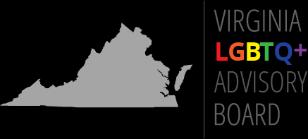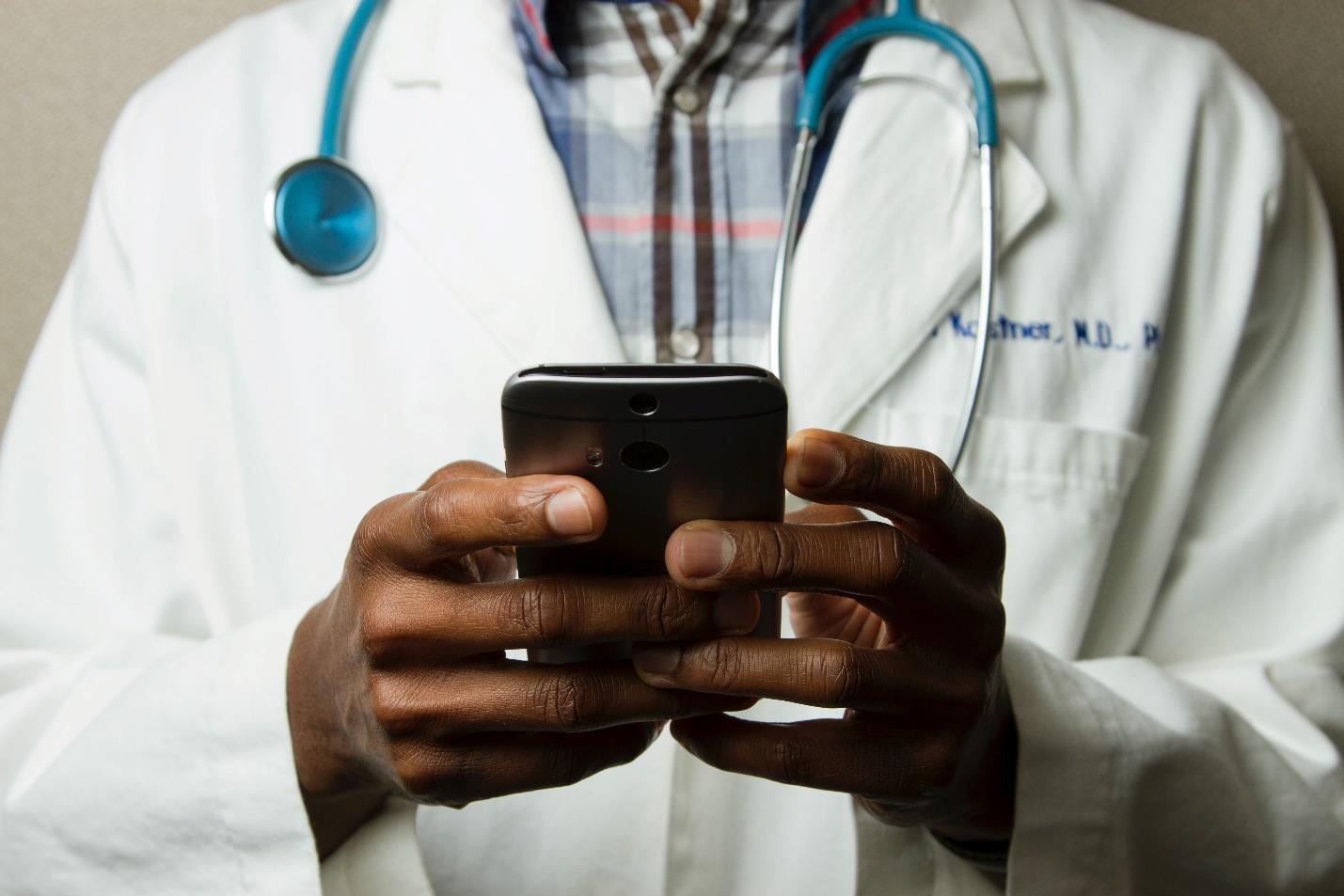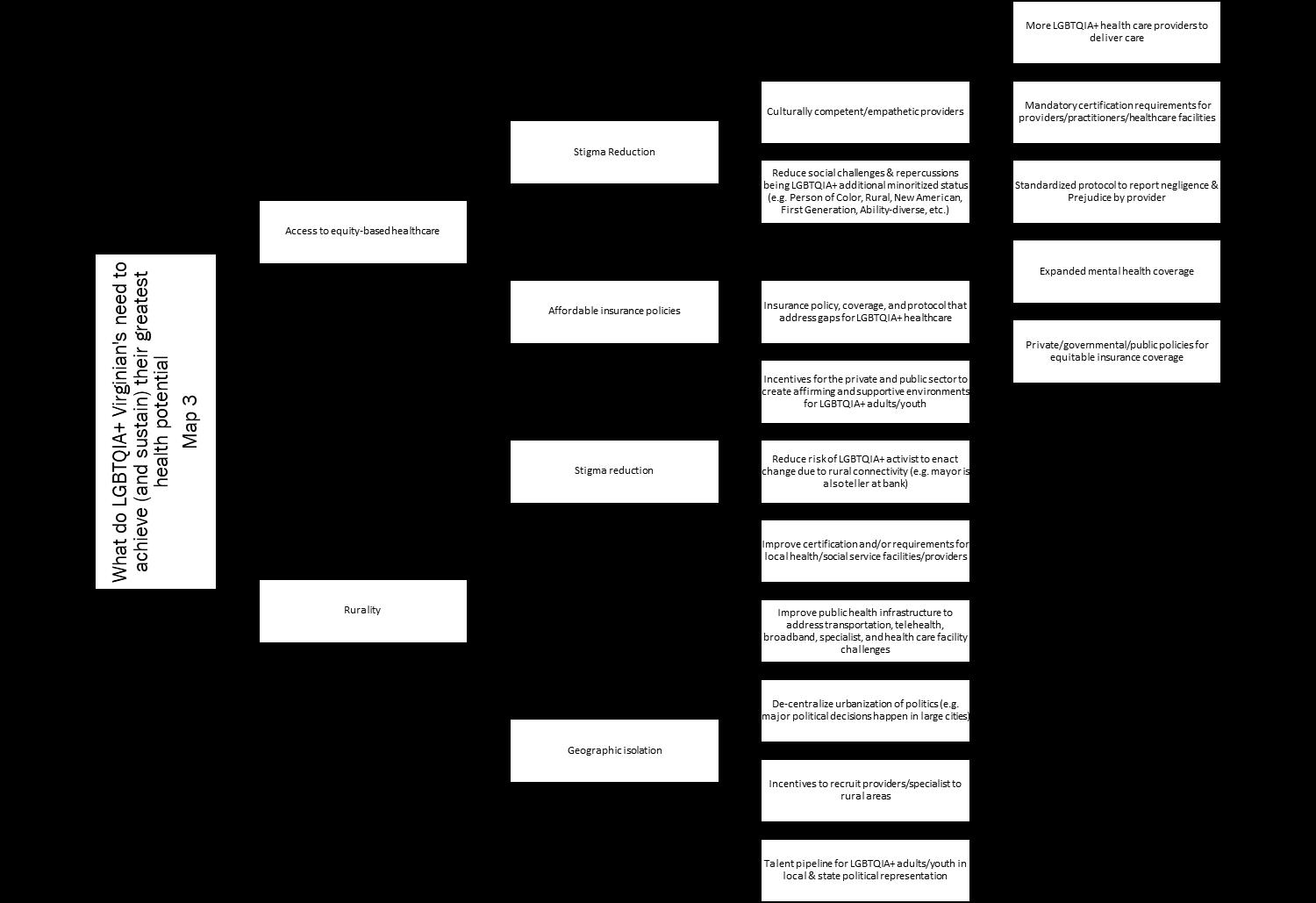Health Equity for LGBTQIA+ Virginians
Virginia LGBTQIA+ Health Committee
Initial Topic Exploration & Recommendations
Lead Authors: Monica Motley, PhD, MSEd, MPH & Kevin Han
Virginia LGBTQIA+ Advisory Board

Fall 2023


Virginia LGBTQIA+ Health Committee
Initial Topic Exploration & Recommendations
Lead Authors: Monica Motley, PhD, MSEd, MPH & Kevin Han
Virginia LGBTQIA+ Advisory Board

Fall 2023


Established in April 2021
The purpose of the board is to advise the Governor on the economic, professional, cultural, educational, and governmental issues that affect LGBTQIA+ Virginians. To learn more about the Virginia LGBTQIA+ Advisory Board visit https://www.lgbtq.virginia.gov/aboutlgbtq/.
The health committee consists of advisory board members with personal, professional, and community experience in an array of health, public health, health equity, non-profit, activism, and research topics. The committee can explore data, sponsor symposiums, conduct research, and host community conversations to gather information and present recommendations to the Governor elevating issues and solutions relevant to the LGBTQIA+ community.
Movement Advancement Project: State Profiles. https://www.lgbtmap.org/equality-maps/profile_state/VA.
The Williams Institute: UCLA. LGBT Youth Population in the United States.
https://williamsinstitute.law.ucla.edu/publications/lgbt-youth-pop-us/
Scientific studies & national data show:
• The median amount of time spent on LGBTQIA+ specific training was only 5 hours for medical students 1, 2
• 29% of transgender patients said a doctor or other health care provider refused to see them because of their actual or perceived gender identity 3
• A combination of discriminatory health insurance policies, lack of health insurance, and higher risk of stigma associated with “outness” are the most frequently reported barriers to health care access for rural LGBTQIA+ individuals 4-6

• LGBTQIA+ youth of color account for 52% of the 3.2 million LGBTQIA+ youth population (8-18), and overall LGBTQIA+ youth experience higher rates of anxiety, sadness, and depression when compared to heterosexual youth 7,8
• LGBTQIA+ adults 65 years of age and older have higher rates of isolation, poor mental health, limited access to culturally relevant social services 9,10
Identifying and exploring health disparities and health inequities experienced by LGBTQIA+ folks are complex and systematic. 1-10 Further the diversity of the LGBTQIA+ community in the Commonwealth requires exploratory strategies that also consider “social determinants of health” that also significantly shape health and quality of life outcomes. 11-13
The” Comprehensive Participatory Planning and Evaluation (CPPE)” model is an evidence-based process designed to guide community health research, planning, and evaluation. 14 More specifically, the model uses a multi-step “exploration-toaction” approach that purposefully leverages diverse lived experiences, local expertise, community priorities, and professional specializations. Resulting data is then transformed into tables and “maps” that visually breakdown the complexity of the problem to more feasibly identify potential solutions and opportunities for continued evaluation/research. 14
As a result, the CPPE process was an ideal model for the Virginia LGBTQIA+ Health Committee to use in its initial exploration of the following question “What do LGBTQIA+ Virginian’s need to achieve (and sustain) their greatest health potential?”
Over the course of 16 weeks, the committee met virtually and in-person to execute the first step of the CPPE process “problem assessment.” 14 The problem assessment phase uses a starting question to work “backwards” via a series of prompts to explore root causes and influential factors contributing to the identified problem. 14 Each committee member started the process using a “table” format to list influences that shape LGBTQIA+ health potential. These influences were then compared and sorted into major themes and secondary factors. The themes were then rated from “most influential” to “least influential” to select the top 3 priorities to further explore. Additional exploration and referencing of studies, national/state data, lay materials, practice-based information, state government policies, and lived experience insight was shared to strengthen credibility of theme selections.
Each committee member presented this information during committee meetings, which were also open to the public. Committee discussions explored gaps, overlapping ideas, and additional insights. After tables were presented,
committee members had an opportunity to add their feedback directly to each other’s tables. References to support the feedback was also provided so the original author could further explore the information. Once again, the “feedback loop” process was initiated virtually and/or in person to update and synthesize tables. Resulting data was then organized into a ranking table for final selection of themes. In this last step of the process, each theme was rated as “high, medium, or low” impact based on a selection criterion informed by the CPPE process as well as additional evidence-based decision-making strategies. 14 The selection criterion: 1) provided a coherent, consensual, and replicable way to track decision-making; 2) ensured repeated themes were included; 3) accounted for decision making inequities allowing for nuanced information to be included in the final selection; and 4) assessed “real time” viability of data to address health inequities of LGBTQIA+ Virginian’s based on Governor and community interest.
Maps that share overlapping influences & themes
Address state policy, code, administrative, and/or budget gap
Address implementation gap (e.g. policy passed, but not widely supported or implemented properly)
Viability to reduce health inequities for LGBTQIA+ Virginians
Aligns w/ Governor priorities
Can be integrated into existing local/state services
Aligns w/ LGBTQIA+ Virginians priorities
Support/partnership from the LGBTQIA+ community
Social determinants of health
Language access
Information access & distribution
Access to equity-based healthcare & services


Policies that prevent on-going societal tragedies & emergencies
Rurality
Anti-oppressive healthcare systems & culture
Workforce preparation & diversity
Eight themes were identified as key areas of focus to help LGBTQIA+ Virginian’s achieve (and sustain) their greatest health potential. Appendix A: Causal Map Tables & Appendix B: Causal Maps are the resulting visual models that breakdown each theme to include influencing secondary factors. Ultimately, these secondary factors are the launching pad into the committee’s next steps of the CPPE process which is to identify existing or needed solutions in the form of policy, budget, and/or administrative recommendations. Appendix C: Committee Recommendation, showcases the “action-oriented” nature of the CPPE process, as the information yielded from models will be included in the Fall 2022 Virginia LGBTQIA+ Advisory Board Report.

Special thanks to the committee members, special assistant, and community members that contributed to this process.
Additional contributors: Evelyn BruMar & Bryan Price
Special note: To capture all data in maps, the font size in Appendix B is small and best read on devices with a “magnifying” feature. Therefore, this appendix is not accessible to those with visual preferences for larger font. We do offer the same information in Appendix A.
1. Sekoni, A.O., Gale, N.K., Manga-Atangana, B., Bhadhuri, A. & Jolly, K. (2017), The effects of educational curricula and training on LGBT-specific health issues for healthcare students and professionals: a mixed-method systematic review. Journal of The International AIDS Society, 20: 21624. https://doi.org/10.7448/IAS.20.1.21624.
2. Obedin-Maliver J, Goldsmith ES, Stewart L, & et al. Lesbian, Gay, Bisexual, and Transgender–related content in undergraduate medical education. JAMA. 2011;306(9):971–977. doi:10.1001/jama.2011.1255.
3. Mirza , S. A., & Rooney, C. (2021, March 5). Discrimination prevents LGBTQ people from accessing health care. Center for American progress.
https://www.americanprogress.org/issues/lgbtqrights/news/2018/01/18/445130/discrimination-prevents-lgbtq-peopleaccessing-health-care/.
4. Whitehead, J., Shaver, J., & Stephenson, R. (2016). Outness, stigma, and primary health care utilization among rural lgbt populations. PloS one, 11(1), e0146139. https://doi.org/10.1371/journal.pone.0146139.
5. Ward, B. W., Dahlhamer, J. M., Galinsky, A. M., & Joestl, S. S. (2014). Sexual orientation and health among U.S. adults: National health interview survey, 2013. National health statistics reports, (77), 1–10.
6. Baker, K., & Durso, L. E. (2017, March 22). Why repealing the affordable care act is bad medicine for LGBT communities. Center for American progress.
https://www.americanprogress.org/issues/lgbtqrights/news/2017/03/22/428970/repealing-affordable-care-act-badmedicine-lgbt-communities/.
7. Movement Advancement Project: LGBTQ youth. Movement advancement project | LGBTQ Youth. (n.d.). https://www.lgbtmap.org/LGBTQ-youth.
8. The Trevor Project National Survey 2019. The Trevor Project - Saving Young LGBTQ Lives. (n.d.). https://www.thetrevorproject.org/survey-2019/.
9. Cahill S, South K, Spade J. Outing age: Public policy issues affecting gay, lesbian, bisexual and transgender elders. Washington: National Gay and Lesbian task force; 2009 Nov.
10. Emlet C. A. (2016). Social, Economic, and Health Disparities Among LGBT Older Adults. Generations (San Francisco, Calif.), 40(2), 16–22.
11. Woolf, S. H., & Braveman, P. (2011). Where health disparities begin: The role of social and economic determinants--and why current policies may make matters worse. Health affairs (Project Hope), 30(10), 1852–1859.
https://doi.org/10.1377/hlthaff.2011.0685.
12.Braveman, P., Egerter, S., & Williams, D. R. (2011). The social determinants of health: Coming of age. Annual review of public health, 32, 381–398.
https://doi.org/10.1146/annurev-publhealth-031210-101218.
13.United States Department of Health and Human Services. (2022). Priority areas: Social determinants of health. Social determinants of healthhealthy people 2030. Retrieved June 8, 2022, from
https://health.gov/healthypeople/priority-areas/social-determinantshealth.
14.Zoellner, J., Motley, M., Wilkinson, M. E., Jackman, B., Barlow, M. L., & Hill, J. L. (2012). Engaging the Dan River Region to reduce obesity: Application of the comprehensive participatory planning and evaluation process. Family & community health, 35(1), 44–56.
https://doi.org/10.1097/FCH.0b013e3182385cd9.
Appendix A: Causal Map Tables
Map 1. Table 1: What do LGBTQIA+ Virginian’s need to achieve (and sustain) their greatest health potential
Primary Influence
Language access
Secondary Influences
• Information and health equity outreach provided in top 15 languages in the state
• Accurately translating health/medical concepts and terms in English to another language that require nuance
• Social determinants of health for English as a second language LGBTQIA+ folks
• Youth-centered medical/health language
• Linguistic specialist track for medical training programs/schools
• Focus on patient safety as well as patient satisfaction
Reference(s)
Roadmap for Canada’s Official Languages 2013-2018: education, immigration, communities. (2018, March 28). The Impact of Language Barriers on Patient Safety and Quality of Care. Canada.ca. Retrieved June 8, 2022, from https://www.reseausantene.ca/wpcontent/uploads/2018/05/Impact-language-barrierqualitysafety.pdf
Diversify sign language support in top 15 languages in the state
• Sign Language support in top 15 languages in the state to access health/social services
• Access to technology, telehealth, & translation services that offer language interpretation via artificial intelligence
Virginia Department of Judicial Services. (2015, March). SERVING non-English speakers in the Virginia court system frequently asked questions and answers. Virginia’s judicial system.
https://www.vacourts.gov/courtadmin/aoc/djs/ programs/interpreters/manuals/lep/chapter10.pdf
Virginia Department of Social Services. (2020, July 29). Top 15 languages spoken in Virginia. Immigrant services. https://www.dss.virginia.gov/community/ona/immigrant _services.cgi.
Distribution of information
• Grants for public, private, and grass-roots networks to distribute health information
• Diversify distribution options to include trusted sources that ensures anonymity for those who want it (e.g. HIV testing kit for those that don't want to disclose to primary care doctor)
Virginia Department of Health. (2020). 2020 state health assessment: Goal 1.2 Virginia's communities collaborate to improve the population's health. Virginia's plan for wellbeing. https://virginiawellbeing.com/the-plan-english/.
Causal Map 2: Table 2: What do LGBTQIA+ Virginian’s need to achieve (and sustain) their greatest health potential
Medical/ specialist school training
Secondary Influences
• Evidenced mastery of competencies in minoritized health (e.g. intersectional LGBTQIA+ folks)
o Sufficient time and practice w/ competencies
o Update university/health Program accreditation requirements
o Specialization tracks for LGBTQIA+ youth/elders health care
Reference(s)
Sekoni, A.O., Gale, N.K., Manga-Atangana, B., Bhadhuri, A. & Jolly, K. (2017), The effects of educational curricula and training on LGBT-specific health issues for healthcare students and professionals: a mixed-method systematic review. Journal of the International AIDS Society, 20: 21624.
https://doi.org/10.7448/IAS.20.1.21624. Social determinants of health included in care
• Address health inequities & community disparities as a part of care plan
o Social determinants of health prognosis & treatment plan as part of primary care health (e.g. housing, food security, education, legal support, job security, etc.)
o More expansive insurance & medical coverage gaps for transgender youth/adults/elders
o Health equity & public health models to address localized systemic and systematic discrimination experienced by patient(s)
Braveman P. (2014). What are health disparities and health equity? We need to be clear. Public health reports (Washington, D.C.: 1974), 129 Suppl 2(Suppl 2), 5–8.
https://doi.org/10.1177/00333549141291S203
Movement Advancement Project. (2022). Virginia's equality profile. Movement advancement project: State profiles.
• Local, state, & federal policies & laws
o Mandatory & evidenced EID competencies for state health/social services employees
o Mandatory & evidenced EID competencies for state health/social services employees in nongovernmental agencies
• Reduce “Minority/Minoritized” Stress Theory & seeking care
https://www.lgbtmap.org/equality_maps/ profile_state/VA Health care w/o discrimination/ oppression
o Improve workforce resources/support to reduce burn out of health professionals, particularly providers serving minoritized communities
Ward, B. W., Dahlhamer, J. M., Galinsky, A. M., & Joestl, S. S. (2014). Sexual orientation and health among U.S. adults: national health interview
Policies that prevent on-going societal tragedies & emergencies
o Diagnosis, prognosis, & treatment competencies beyond patient/provider interaction
• Eradicate systematic discrimination in healthcare
o Incentives to develop equity-based clinic/hospital/practice/organizational policies
o Mandatory multi-cultural management competencies for medical facility staff/administrators/board members
survey, 2013. National health statistics reports, (77), 1–10.
Whitehead, J., Shaver, J., & Stephenson, R. (2016). Outness, stigma, and primary health care utilization among rural lgbt populations. PloS one, 11(1), e0146139.
https://doi.org/10.1371/journal.pone.0146139
• Evidence-based policies that eradicate discrimination and/or hate motivated attacks against LGBTQIA+ minoritized folks
• Uniform domestic terrorism statutes and criminal codes
• Effective gun laws/protections
Mercy, J. A., Rosenberg, M. L., Powell, K. E., Broome, C. V., & Roper, W. L. (1993). Public health policy for preventing violence. Health Affairs, 12(4), 7-29.
Causal Map 3: Table 3: What do LGBTQIA+ Virginian’s need to achieve (and sustain) their greatest health potential
Access to equitybased healthcare
Secondary Influences
• Stigma Reduction
o Culturally competent/empathetic providers
▪ More LGBTQIA+ health care providers to deliver care
▪ Mandatory certification requirements for providers/practitioners/healthcare facilities
▪ Standardized protocol to report negligence & Prejudice by provider
o Reduce social challenges & repercussions being LGBTQIA+ additional minoritized status (e.g. Person of Color, Rural, New American, First Generation, Ability-diverse, etc.)
• Affordable insurance policies
o Insurance policy, coverage, and protocol that address gaps for LGBTQIA+ healthcare
▪ Expanded mental health coverage
▪ Private/governmental/public policies for equitable insurance coverage
Rurality • Stigma reduction
o Incentives for the private and public sector to create affirming and supportive environments for LGBTQIA+ adults/youth
o Reduce risk of LGBTQIA+ activist to enact change due to rural connectivity (e.g. mayor is also teller at bank)
o Improve certification and/or requirements for local health/social service facilities/providers
• Geographic isolation
o Improve public health infrastructure to address transportation, telehealth, broadband, specialist, and health care facility challenges
o De-centralize urbanization of politics (e.g. major political decisions happen in large cities
Camacho, A.; Kennedy, N.; Novick; E.Camacho, A.; Kennedy, N.; Novick; E. (2012). Top Health Issues for LGBT Populations Information & Resource Kit. Retrieved June 8, 2022, from https://www.lgbtagingcenter.org/reso urces/pdfs/TopHealthIssuesforLGBTP opulationsKit.pdf
Movement Advancement Project. April 2019. Where We Call Home: LGBT People in Rural America. www.lgbtmap.org/rural-lgbt
o Incentives to recruit providers/specialist to rural areas
o Talent pipeline for LGBTQIA+ adults/youth in local & state political representation
Causal Map 4: Table 4: What do LGBTQIA+ Virginian’s need to achieve (and sustain) their greatest health potential
Primary Influence
Representation, diversity & inclusion
Secondary Influences
• A seat at the table w/ decision making power
o Talent development and pipelines for LGTBQIA+ adults/youth
• Equity & inclusion policies that de-institutionalize discrimination and prejudice in state departments
o Standardized expectations, trainings, goals, and equity/inclusion/diversity measures for state employees & administrators
Reference(s)
Sekoni, A.O., Gale, N.K., Manga-Atangana, B., Bhadhuri, A. and Jolly, K. (2017), The effects of educational curricula and training on LGBT-specific health issues for healthcare students and professionals: a mixed-method systematic review. Journal of the international AIDS society, 20: 21624.
https://doi.org/10.7448/IAS.20.1.21624.
Language access
• Access to multi-lingual healthcare services
• Information and health equity outreach provided in top 15 languages in the state
• Culturally relevant outreach to minoritized/vulnerable populations
• Expanded policies that require linguist/translators for all local & state health/social services
o Funding
o Staffing
o Community advocates
o Policy priorities
Access to equitybased health services
• Neighborhood-centric health hubs
o Local government zoning/ tax incentives to create public health service hubs in health disparate communities
• Equity, inclusion, diversity
o Multi-lingual health navigators & community health workers that deliver home and community-based medical services
Roadmap for Canada’s Official Languages 2013-2018: Education, immigration, communities. (2018, March 28). The impact of language barriers on patient safety and quality of care. Canada.ca.
https://www.reseausantene.ca/wpcontent/uploads/2018/05/Impact-languagebarrier-qualitysafety.pdf
People From Accessing Health Care. Center for American Progress.
https://www.americanprogress.org/issues/lgbtqrights/news/2018/01/18/445130/discriminatio n-prevents-lgbtq-people-accessing-health-care/.
Cahill S, South K, Spade J. Outing age: Public policy issues affecting gay, lesbian, bisexual and
o Culturally competent health providers that care for intersectional LGBTQIA+ folks
o Mandatory certifications to deliver equity--based healthcare
• Affordable coverage
o Local, state, and federal policies that increase budget allocations to LGBTQIA+ health
o Policies (e.g. administrative & budget) that upgrade local government's capacity to deliver disease prevention services relevant to LGBTQIA+ folks
• Connecting people to resources
o Protections against organizational discrimination to access "quality of life" resources safely
o Minimal participation/Representation of intersectional LGBTQIA++ folks in state gov decisions & representation
transgender elders. Washington: National Gay and Lesbian Task Force; 2009 Nov.
Emlet C. A. (2016). Social, economic, and health disparities among lgbt older adults. Generations (San Francisco, Calif.), 40(2), 16–22.
Language access
What do LGBTQIA+ Virginian's need to achieve (and sustain) their greatest health potential Map
Diversify access to public health information
Information and health equity outreach provided in top 15 languages in the state
Accurately translating health/medical concepts and terms in English to another language that require nuance
Social determinants of health for English as a second language LGBTQIA+ folks
Youth-centered medical/health language
Linguistic specialist track for medical training programs/schools
Focus on patient safety as well as patient satisfaction
Sign Language support in top 15 languages in the state to access health/social services
Access to technology, telehealth, & translation services that offer language interpretation via artificial intelligence
Grants for public, private, and grass-roots networks to distribute health information
Distribution of information
Diversify distribution options to include trusted sources that ensures anonymity for those who want it (e.g. HIV testing kit for those that don't want to disclose to primary care doctor)



Background Information. In the midst of an ongoing pandemic and extended Public Health Emergency (PHE), it is essential that Virginians have access to affordable health services and comprehensive coverage. The past two years have seen significant progress in expanding Medicaid coverage in Virginia, from expanding coverage to adults 19-64 and introducing new benefits like dental and doulas.1 Yet the challenge for so many people is accessing these new benefits, because of language barriers or accessibility issues like technology.
The LGBTQIA+ community has been historically underrepresented and underserved. There are often barriers to our receiving care, whether it is lack of resources, inadequate information, and social stigma. And for those who have health coverage, there are people in our community that have faced negative experiences with their providers. As the governor for all Virginians, we hope you will do everything in your power to address the issue of access to health services and health coverage. Within this issue, there are many intersecting elements including language access, rural populations, and mental health services.
Significance. Virginia’s new biennial budget2, which went into effect on July 1, includes significant investments in public health.3 It is notable, however, that most of the funding for public health services comes from federal funds.4 VDH’s budget has remained flat in the past two decades, and that presents challenges because federal public health funding is unpredictable and may not match local needs.5 Since federal funding is often disease or program specific, it can lead to underinvestment in “cross-cutting public health needs” like maintenance and digitization.6
For the LGBTQIA+ community, access to healthcare is a critical issue. Three factors that affect our community are stigma, affordability, and accessibility. Being LGBTQIA+ cannot be defined by one definition or experience; it is a big tent of individuals that form a community. It is important to have culturally competent and empathetic providers who can put the patients’ needs first without judgment.
1 https://www.dmas.virginia.gov/about-us/medicaid-expansion/
2 https://budget.lis.virginia.gov/bill/2022/2/HB30/Chapter/
3https://vpha.wildapricot.org/resources/Documents/Key%20Public%20Health%20Takeaways%20from%20Virginia%e2%80%99s%20New%20Budget.pdf
4https://vpha.wildapricot.org/resources/Documents/Virginia's%20Public%20Health%20Landscape%20-%20A%20Call%20to%20Action.pdf
5https://vpha.wildapricot.org/resources/Documents/Virginia's%20Public%20Health%20Landscape%20-%20A%20Call%20to%20Action.pdf
6https://vpha.wildapricot.org/resources/Documents/Virginia's%20Public%20Health%20Landscape%20-%20A%20Call%20to%20Action.pdf
It is also imperative to expand health services both through innovative solutions and through our existing programs like Medicaid. For example, the Virginia Department of Health currently offers free HIV testing home kits for Virginia residents.7 While that is a great resource, the administration can go further by including this preventative tool, as well as other resources, in Medicaid.
Health coverage comes with various barriers, including language access and proximity to care. In 2019, roughly 485,270 Virginians (6% of total state population) identified as Limited English Proficient (LEP), which is a 14% increase from 2010 and is only expected to increase further.8 Although the Virginia Department of Medical Assistance Services (DMAS) provides translation and language assistance upon request, it is not clear how beneficiaries would make that request when they are LEP.9 In rural communities, there are less hospitals and providers which makes it harder for LGBTQ+ folks to get the care they need.
The three issues above are all impacted by funding, or lack thereof. Without stable funding, it will be difficult to adequately address the social determinants of health that the LGBTQIA+ community, and all who intersect with it, faces. The administration has the unique power and opportunity to strategically invest resources and funding to the communities that are underfunded and underrepresented. Addressing the public health of our community helps address the public health of Virginia as a whole.
Innovation. One innovative way to address the access of care is to bring care to the people. There are already examples in Virginia. The Inova health care system recently launched the Pride clinic, its first primary care clinic devoted to the LGBTQIA+ community.10 The clinic is located in Falls Church and is open to patients 12 years old and up, and “provides primary care, including preventive care and health screenings, as well as pre-exposure prophylaxis (PrEP) for HIV prevention and gender-affirming care, including counseling for youths and adults about health, gender identity and sexuality.”11
Another way is to weave Community Health Workers, or CHWs, into the mix. CHWs are invaluable to advancing health equity in the communities they serve, whether it is through vaccine outreach or culturally competent health education. Currently, Virginia Medicaid does not reimburse CHW services.12 Virginia can follow other state models like California, where the Department of Health Care Services (DHCS) added CHW services as a Medi-Cal benefit.13 The Virginia Department of Health, in collaboration with
7 https://redcap.vdh.virginia.gov/redcap/surveys/?s=77W7DKHHKJ
8http://hamkaecenter.org/wp-content/uploads/sites/69/2021/12/Hamkae-Center-2021-Language-Access-Report.pdf
9http://hamkaecenter.org/wp-content/uploads/sites/69/2021/12/Hamkae-Center-2021-Language-Access-Report.pdf
10 https://www.washingtonpost.com/dc-md-va/2022/06/08/pride-clinic-inova-northern-virginia/
11 https://www.washingtonpost.com/dc-md-va/2022/06/08/pride-clinic-inova-northern-virginia/
12https://www.nashp.org/state-community-health-workermodels/#:~:text=Virginia%20does%20not%20reimburse%20for%20CHW%20services%20through%20its%20Medicaid%20program.&text=Washington%20reimbur ses%20for%20CHW%20services,of%20Medicaid%20value%2Dbased%20payment.
13 https://www.dhcs.ca.gov/community-health-workers
the Virginia Community Health Worker Advisory Group and the Virginia Community Health Worker Association, developed a Certified Community Health Worker Credential.14 The Credential training program should provide LGBTQ+ specific training so that future CHWs are well-equipped to serve folks with intersectional identities. Under the VDH LiveWell brand, the Virginia Department of Health Office of Family Health Services (OFHS) should create a new LGBTQIA+ program that provides resources.15
State Recommendation Recommendation Focus Recommendation Action Recommendation Benefits Recommendation can be paid for
Bring Care to the People
• Budget Change
• Allocate funding in FY 2023-2024 budget to open LGBTQ+ community clinics
• Push General Assembly for more state funding
• Partner with hospitals (ex. Inova) to clinic staffing and implementation
• Provide Transportation for folks to these clinics
• Include HIV/STD testing kits as a Medicaid benefit
● Addresses challenges the LGBTQ+ community faces in rural areas and places that don’t have access to care
● Addresses health disparities of the LGBTQ+ community
● Allocate from federal funding budget surplus or from General Targeted Fund investments
Expand Access
● Lower costs of LGBTQ+ services, medicine
● Include CHW services as a Medicaid benefit.
● For CHW training, ensure culturally competent LGBTQ+ training
● Provide vital documents in threshold languages and alternative formats
● Use inclusive language (gender-neutral)
● Utilizes existing workforce in culturally competent ways
● Inclusivity encourages those without health coverage to enroll
● Addresses language accessibility issues
● Allocate from federal funding budget surplus or from General Targeted Fund investments 14 https://www.vdh.virginia.gov/vdhlivewell/certified-community-health-worker-cchw/
https://www.vdh.virginia.gov/vdhlivewell/vdh-livewell-brand/
Lead Authors: Monica Motley, PhD, MSEd, MPH & Kevin Han

Fall 2023
